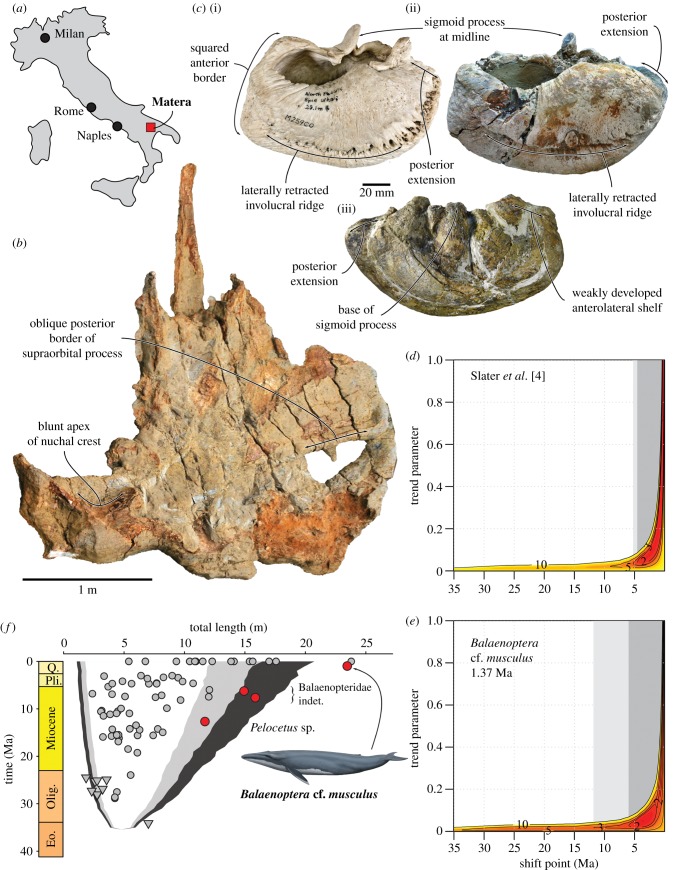Figure 1.
New whale fossils from Italy and Peru imply an early origin of modern mysticete gigantism. (a) Map of Italy showing the fossil locality of Balaenoptera cf. musculus. (b) Cranium of Balaenoptera cf. musculus, in dorsal view. (c) Right tympanic bulla of B. musculus (National Museum of Nature and Science specimen M25900), in dorsal view (i), and B. cf. musculus in dorsal (ii) and ventrolateral (iii) view. (d) Support surface for the mode shift model from Slater et al. [4]; dark and light grey bars denote the range of the 2- and 3-unit support regions, respectively. (e) Support surface for the mode shift model with B. musculus truncated at 1.37 Ma, but with the Peruvian fossils excluded. (f) Mysticete body length plotted against time, and compared with the 80 (white), 90 (grey) and 95% (black) quantiles of 1000 BM simulations on the baleen whale phylogeny of [4]; grey circles are chaeomysticetes, triangles toothed mysticetes, and red circles the new fossils from Italy and Peru. Note that the BM simulations were carried out on a phylogeny that did not include the specimens described here; their placement relative to the quantiles is thus merely indicative. (d–f) Modified from Slater et al. [4]. Photo in (b) by Akhet s.r.l. (www.akhet.it). Drawing of B. musculus by Carl Buell. (Online version in colour.)

